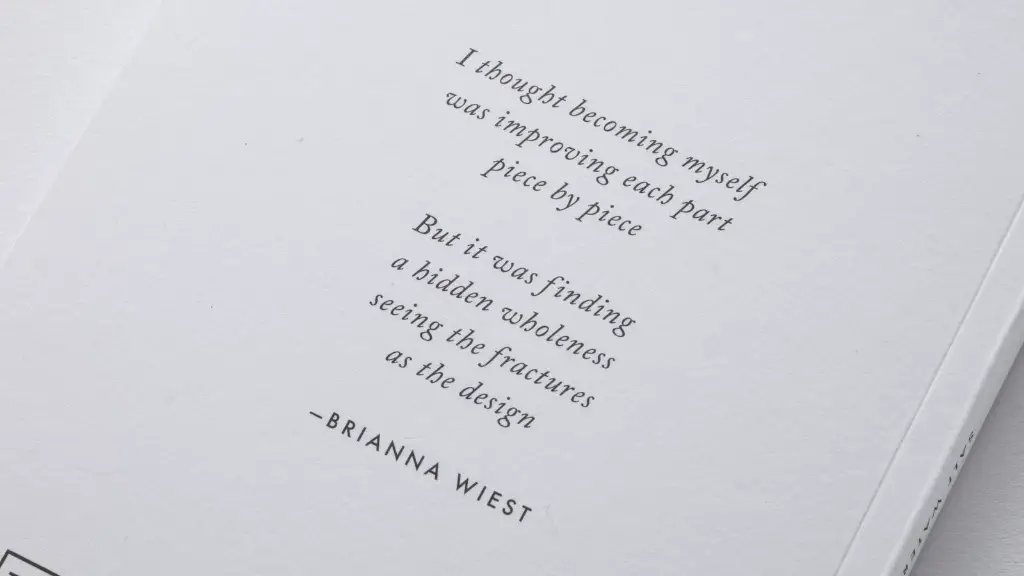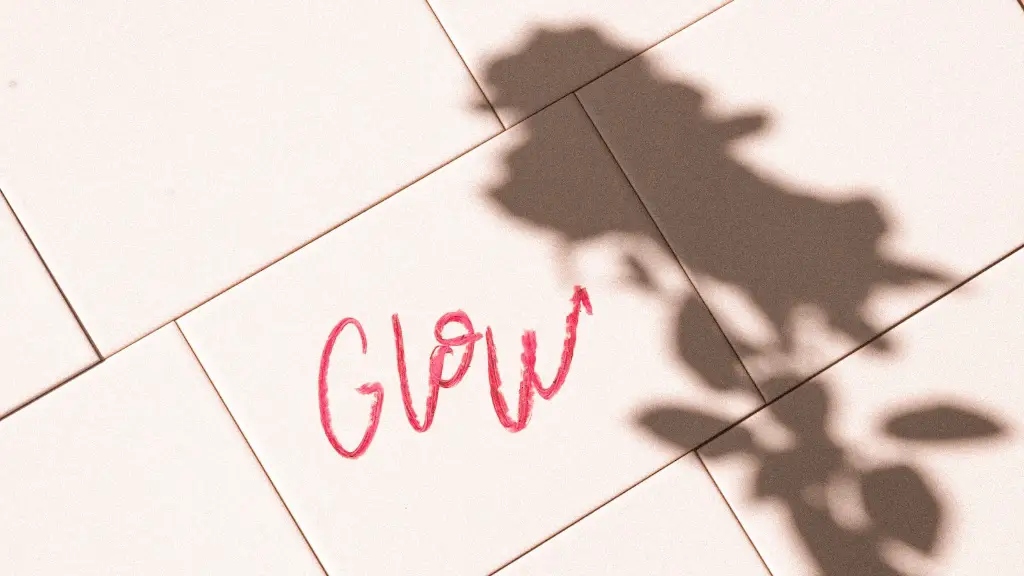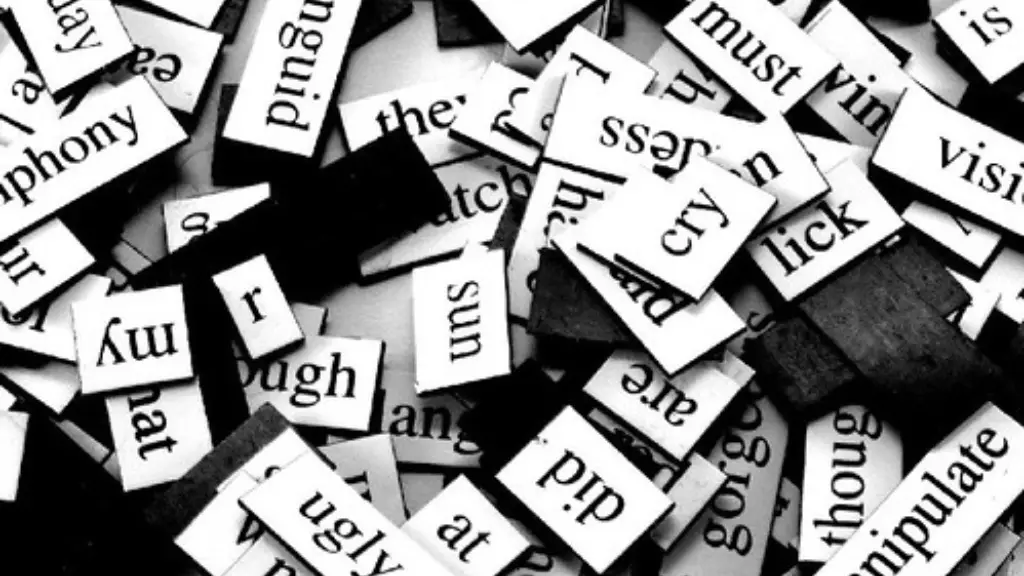When we talk about form in poetry, we’re referencing the structures and forms that poems take. A form is a type of organization, and different poem structures use special techniques and tools to tell the story they’re trying to tell. Forms of poetry can range from the sonnet, sestina, Villanelle and tanka to more obscure forms, like the glosa.
It’s important to note that a poem’s form is not the same as style. A poem can have any style that you want to use, from simple and conversational, to complex and erudite. The form only refers to the arrangement of elements inside the poem, like how many lines it amasses, and how those lines are rhymed or laid out.
It’s common for shorter classic poems to be written in stanza form, like the sonnet, which traditionally has 14 lines of iambic pentameter and a strict rhyming scheme. Some more ancient sonnets, like the ottava rima and the Spenserian, use eight and nine-line stanzas with more complex rhyme schemes.
The sestina is an example of one of the more challenging forms of poetry. This poetic form is made up of six stanzas of six lines each and it uses a repeating end-word pattern. A tanka is another short poem form and is made up of five lines with syllabic pattern 5-7-5-7-7.
Some other forms of poetry are narrative poems and epic poems such as the Greek classic, “The Iliad.” Epic poems are long tales that tend to focus on a single hero and are composed in verse with many narrative strategies.
Modern forms of poetry are generally labeled as “free verse” and are not bound to traditional structure. As could be expected, these poems rely less on techniques like rhyme and use more word play, imagery, and alliteration to create an effect or evoke the desired emotion.
At its core, a free verse poem is defined as a poem that doesn’t follow any specific format or rules. Many poets throughout time have used free verse to express ideas more freely and efficiently than with traditional form, although some poets argue that free verse is not “real poetry” as it lacks structure and discipline.
In conclusion, form in poetry is any type of poetic structure or goal that is chosen by the writer to convey meaning. This can refer to traditional forms of poetry such as haiku and sonnet or modern forms such as free-verse or prose poetry.
Types of Poetry Forms
There are dozens of types of poetry forms to choose from, both traditional and modern. Traditional poetry forms include Shakespearean sonnets, odes, elegies, limericks, rhyme royal, and blank verse. Each of these forms is structured differently, with distinct rhyme schemes, meter and syllable rules, and lines.
Modern poetic forms include free verse, spoken word, cinquains, haibun, haiku, tanka, and concrete. These forms reject traditional rules and allow poets to express their thoughts and feelings more freely. They often rely on metaphor, simile, and other literary devices to convey the poem’s meaning.
When reading a poem, it’s important to consider the form it is written in and what type of effect that form has on the poem’s message. There are also hybrid forms, or forms that exist somewhere between traditional and modern, such as ballads and epics.
Pros and Cons of Writing in Form
Pros of writing in form include the challenge of the structured pattern and language, the ability to convey more meaning with less words, and the ability to create a more aesthetically pleasing piece of work. Writing in form can also help to improve a writer’s craft, as there is an inherent skill in making the words fit the form in an interesting way.
On the other hand, there are some negative aspects of writing in form. It can be time-consuming and tedious, as the poet needs to adhere to the specific form’s rules and guidelines. It can also be difficult to write in form, as it can be hard for novice writers to manipulate language to fit into a structured form.
Many times, writers feel constrained by forms, as they force the writer to conform their language to the rules of the form. As a result, some experienced writers prefer to write in free verse, as it offers more freedom in terms of word choice and expression.
The Appeal of Form in Poetry
What draws so many poets to form is the sense of tradition and the desire for formal mastery. Writing in form can also be a way of expressing more than is possible with free verse, as form allows for more structured expression and more room for the inclusion of metaphors and other literary devices.
Form in poetry can also be a way to challenge yourself as a poet. Writing in form requires precision and attention to detail, and as such, it can be a way to hone your craft, to practice your technique and your understanding of language.
For some, writing poems in form is a way to honor the traditional expressions of poetry, such as sonnets, odes, and haiku. These forms are often seen as having a more tangible connection to poets of bygone eras, making them more awe-inspiring and meaningful in the eyes of modern poets.
Form Versus Content in Poetry
Form and content are often two sides of the same coin, as a poem’s form can impact the way its message is interpreted by its readers. While traditionally, form was more closely followed, now, content is often respected just as much as form in terms of how it impacts the overall effect of a poem.
While structure is an important part of a poem, a poem’s content can also be just as powerful, regardless of its form. Many modern poets view form more as a choice than a requirement, as it can be more liberating to work within a blank verse or free verse form than a structured one.
When reading a poem, it’s important to consider both the form and the content and how this relationship works together to form the poem’s overall meaning. Even if a poem’s form is traditional and structured, its content may be anything but, and this is part of its beauty.
Benefits of Studying Poetic Form
Studying poetry forms can help poets understand language and its use in written works. Forms can be used to explore different areas of the craft, from traditional rhyme schemes to syllable counts to meter. It can also help improve a poet’s writing, as well as further their understanding of traditional poetic expressions.
It can be extremely helpful to understand the history of poetry and what the traditional forms of expression have been. Consider modern expressions such as spoken word, which quickly break from traditional forms, but still maintain elements of traditional poetry.
By studying the origins of poetic forms and their evolution over time, poets can better understand how language is used and can create more powerful, meaningful works of poetry. It also helps them to better understand the works of other poets and appreciate their level of craftsmanship.
Conclusion
Form in poetry is any sort of structure or organization that the poet chooses to express the poem’s message. Traditional forms include sonnets, odes, elegies, and limericks, while modern forms are free-verse and spanned-verse poetry. Studying poetry forms can help poets hone their craft and understand language and its use in literature.





